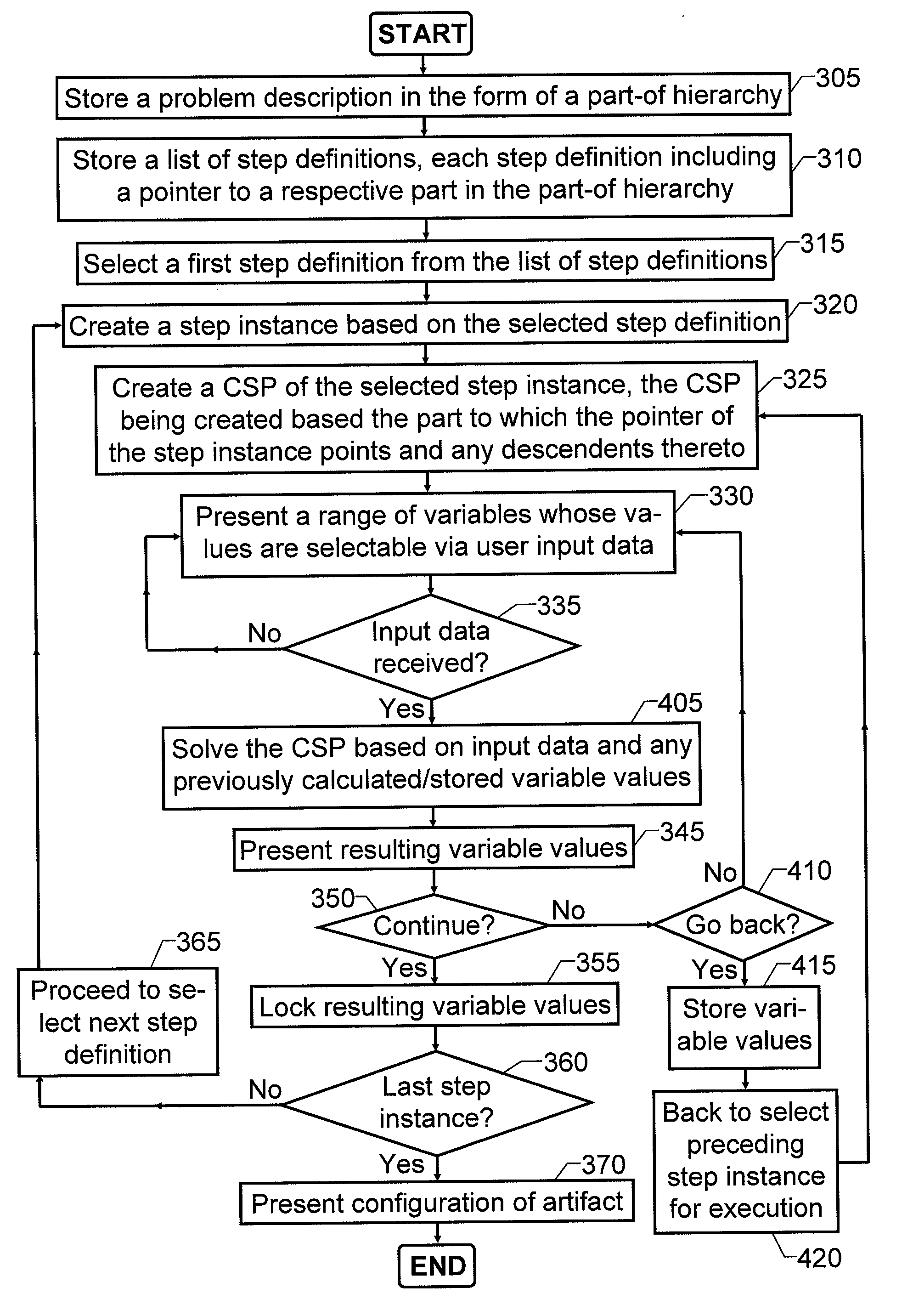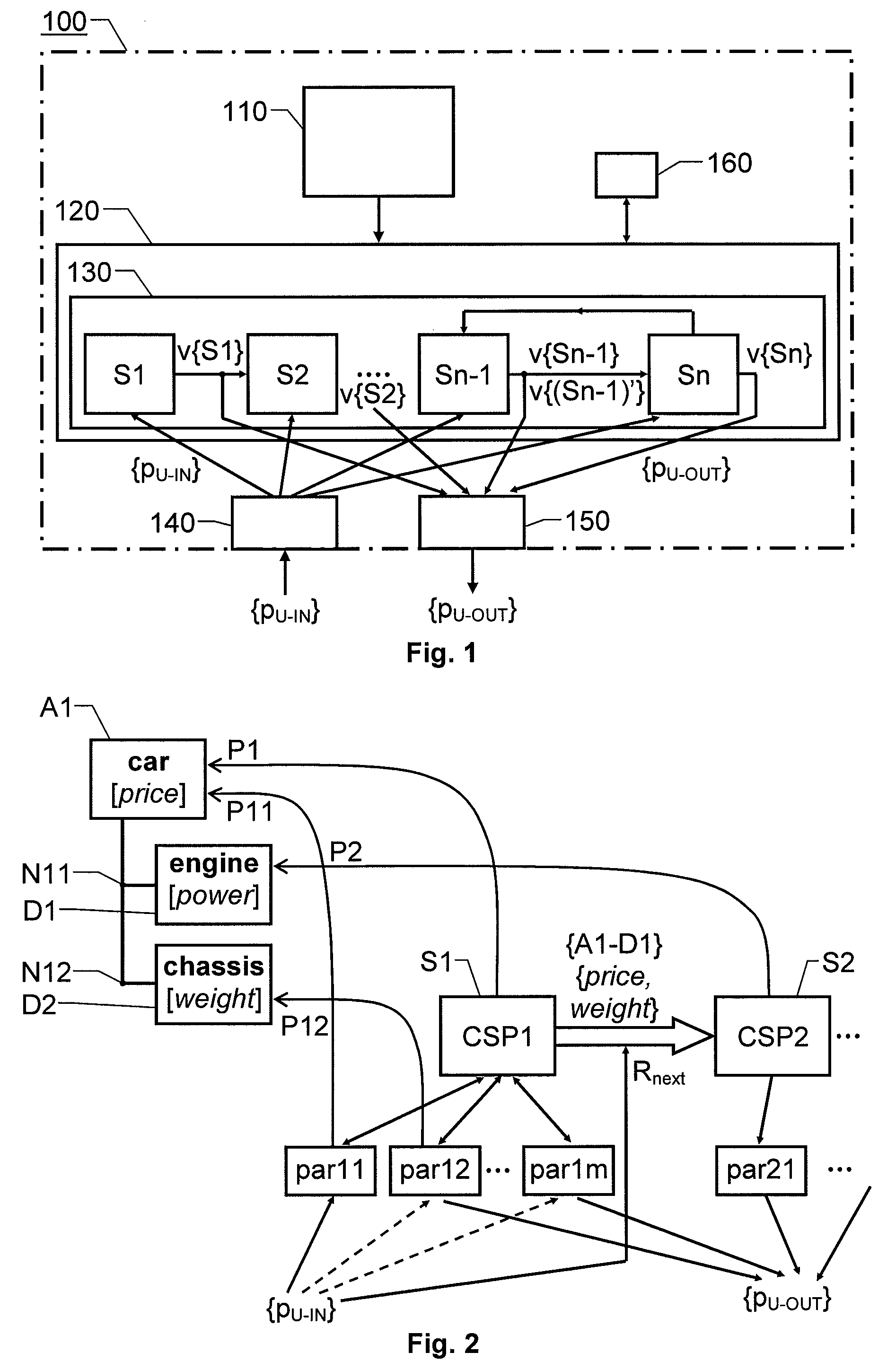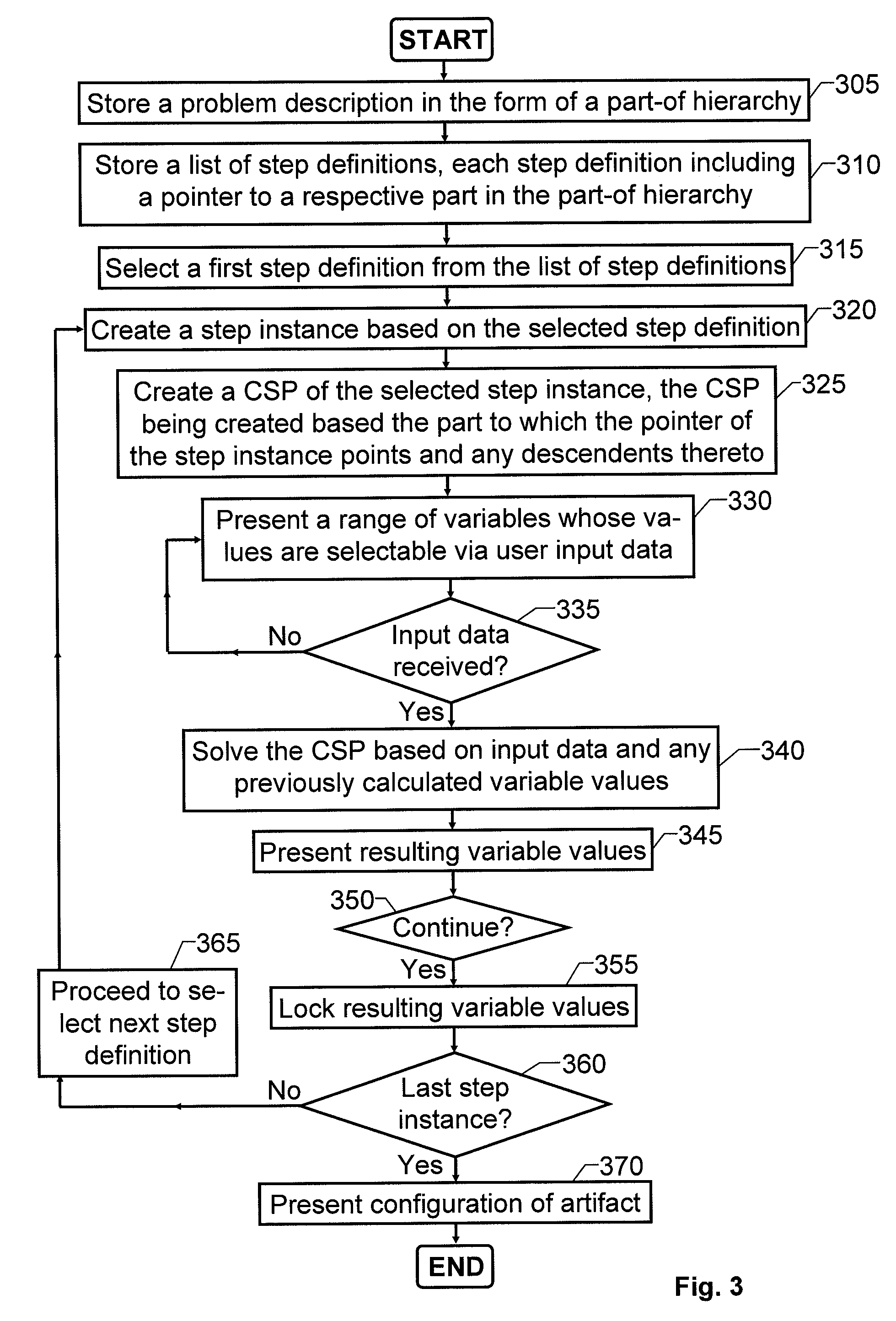Decomposing configuration problems
a configuration problem and configuration technology, applied in the field of decomposing configuration problems, can solve the problems of difficult to achieve the degree of efficiency and user-friendliness that is attainable, and the complexity of the task is difficult to find, and achieves the effect of efficient and user-friendly
- Summary
- Abstract
- Description
- Claims
- Application Information
AI Technical Summary
Benefits of technology
Problems solved by technology
Method used
Image
Examples
Embodiment Construction
We refer initially to FIG. 1, which shows a block diagram over a system 100 according to one embodiment of the invention. The system 100 is arranged to configure an artifact having variable features. Moreover, we presume that the artifact's constituting components and features are selectable via parameters in an interrelated set of parameters, and that a range of consistent configurations for the artifact is defined by a set of constraints restricting which variable values that are simultaneously selectable.
The system includes a storage means 110, a processing means 120 and an application module 130. It is further preferable if the system 100 includes, or is associated with, one or more of an input interface 140, an output interface 150 and a computer readable medium 160 containing a program, which is adapted to control the operation of the system. Furthermore, it is generally preferable if the processing means 120 is arranged to implement the application module 130. For instance, t...
PUM
 Login to View More
Login to View More Abstract
Description
Claims
Application Information
 Login to View More
Login to View More - R&D
- Intellectual Property
- Life Sciences
- Materials
- Tech Scout
- Unparalleled Data Quality
- Higher Quality Content
- 60% Fewer Hallucinations
Browse by: Latest US Patents, China's latest patents, Technical Efficacy Thesaurus, Application Domain, Technology Topic, Popular Technical Reports.
© 2025 PatSnap. All rights reserved.Legal|Privacy policy|Modern Slavery Act Transparency Statement|Sitemap|About US| Contact US: help@patsnap.com



